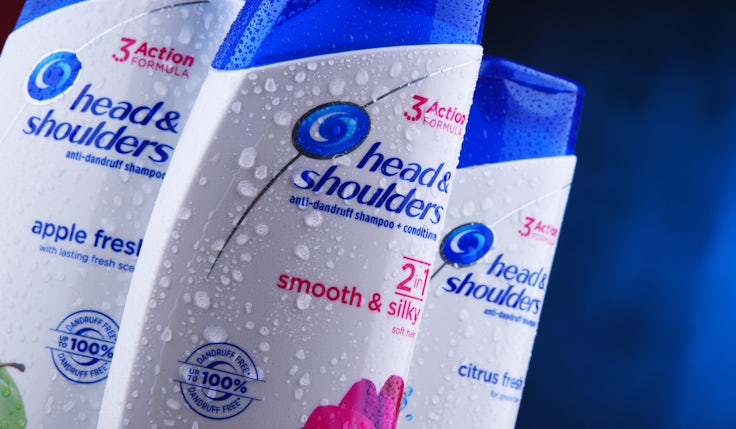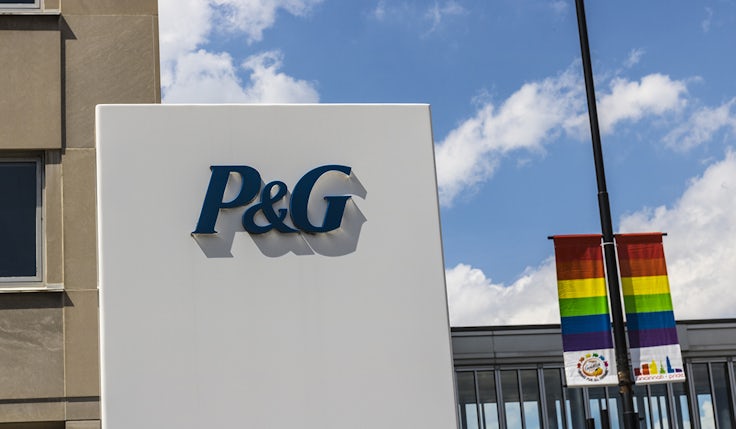P&G to ‘close couple’ price increases with innovation
While promising continued brand investment, P&G is also making spend more efficient, with new targeting capabilities across both TV and digital.
 Procter & Gamble (P&G) is increasing the value of its brands by “close coupling” price increases with product innovation “whenever possible”, according to CEO Jon Moeller.
Procter & Gamble (P&G) is increasing the value of its brands by “close coupling” price increases with product innovation “whenever possible”, according to CEO Jon Moeller.
The FMCG giant’s portfolio is focused on daily use categories where “performance drives brand choice”, he explained to investors today (29 July).
“As consumers face increased pressure on nearly every aspect of their household budgets, we invest to deliver truly superior value and [the right] combination of price, product and performance to earn their loyalty every day,” he said.
In the fourth quarter of P&G’s fiscal year, ending 30 June, P&G reported net sales of £19.5bn (£16bn), up 3% year on year. Organic sales increased by 7%. The business said growth was driven by an 8% increase in pricing, partially offset by a 1% decrease in volume, which it attributes to pandemic-related lockdowns in China and reduced operations in Russia.
For the entire fiscal year, P&G reported net sales of $80.2bn (£65.9bn), an increase of 5% compared to the prior year, and organic sales again increased by 7%. Organic volume sales were up 2%, alongside a 4% increase in price.
We are committed to keep investing to strengthen the superiority of our brands across innovation, supply chains and brand equity to deliver superior value for consumers.
Jon Moeller, P&G
Elasticity in “most” categories where price increases have been taken have been “better than our historical experience”, Moeller said. All 10 of the company’s product categories grew organic sales over the year.
Overall, net earnings was up 3% to $14.8bn (£12.2bn), although gross profit was down 3% to $38bn (£31.3bn). Global aggregate market share grew 50 basis points.
Gross margin for the quarter decreased 370 basis points compared to a year ago, driven by increased commodity costs, higher freight costs, product and package reinvestments and negative product mix. These were partially offset by 390 basis points of pricing benefit.
Repeating sentiment expressed in P&G’s April 2020 earnings call, shortly after Covid-19 spread to countries worldwide, Moeller maintained that the “best response” to uncertainty and the challenges businesses now face from inflation and the rising cost of living is to “double down” on strategies that are already delivering “very strong results”.
“As we’ve said before, we believe this is a rough patch to grow through, not a reason to reduce investment in the long-term health of the business,” he said.
“We are committed to keep investing to strengthen the superiority of our brands across innovation, supply chains and brand equity to deliver superior value for consumers, in every price tier in which we compete.”
P&G anticipates net sales growth of up to 2% in 2023, and organic sales growth in the range of 3% to 5%.
Unilever ascribes brand growth to ‘precision’ pricing action taken to offset inflation
Marketing efficiently
While P&G promises to continue investing in its brands, it has also been on a mission to make marketing spend more efficient. Over Q4, selling, general and administrative expense (SG&A) as a percentage of sales decreased 340 basis points compared to the prior year, from 29.6% to 26.2%, driven in part by 200 basis points of marketing efficiencies and overhead savings.
“Productivity improvement is a necessity to drive balanced top and bottom line growth and strong cash generation,” Moeller said.
CFO Andre Schulten added “significant” productivity has been delivered in media investment over the past few years, which continues to “strengthen”.
“We have developed strong capability to target better both on TV as well as in digital. Our ability to improve effectiveness of reach and quality of reach is allowing us to drive cost per effective reach down, both in digital and in TV,” he said.
P&G has also shifted more spend into digital media, which now accounts for more than 50% of spend.
P&G’s Marc Pritchard urges marketers to ‘double down’ on creativity amid inflation
“We believe we will use some of that productivity not to reinvest fully, but to actually flow through and help offset inflation, and some of that you saw in Q4,” Schulten said.
Increasing the company’s digital acumen to drive customer “preference”, reduce costs and enable “rapid and efficient decision making” is a key priority for P&G moving forward, Moeller added, using tools such as blockchain and AI to “delight” customers at the “most reasonable price possible”.
He continued: “Success in our highly competitive industry and in dynamic and challenging environments requires agility that comes with a mindset of constructive disruption, a willingness to change, adapt and create new trends and technologies that will shape our industry in the future.”
This is “even more important” in today’s inflationary, post-Covid environment, he said.







Comments